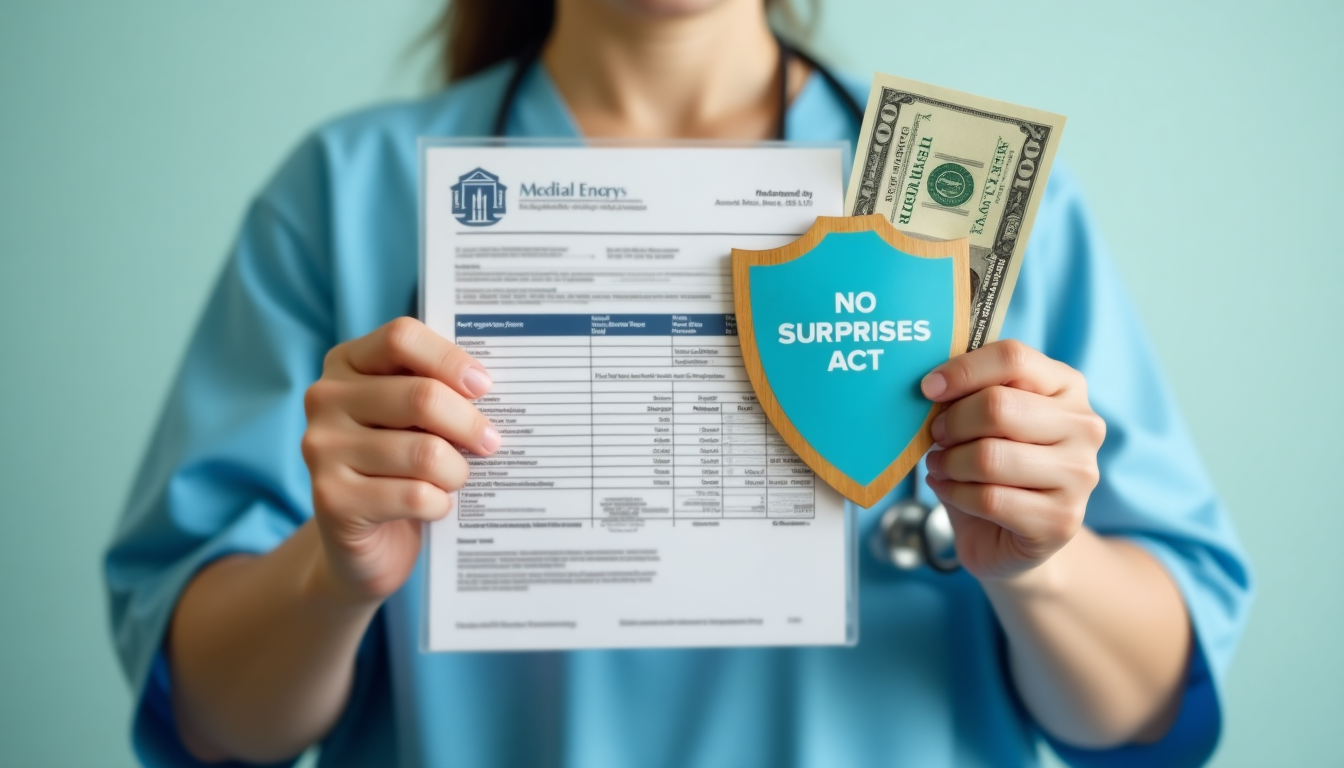Stop Paying Surprise Bills: Your Step-by-Step Guide to Enforcing the No Surprises Act
By Dr. Amara Patel, Medical Economist
Introduction: The $220 Billion Problem in U.S. Healthcare
Healthcare costs shouldn’t be a mystery, yet $220 billion in U.S. medical debt[1] reveals a harsh reality: 14 million Americans owe over $1,000 for care they believed was covered[1]. As both a physician and health economist, I’ve seen how surprise billing erodes trust in healthcare while pushing patients into financial crisis.
The No Surprises Act (NSA) offers critical protections, but 27% of insured adults still receive unexpected bills[2]. Why? Because billing systems are complex economic structures—not unsolvable puzzles. This guide will help you navigate these systems confidently.
What the No Surprises Act Covers (And Where It Falls Short)
Key NSA Protections
- Bans balance billing for:
- Emergency care at any facility
- Non-emergency care at in-network hospitals
- Air ambulance services (ground ambulances excluded)
- Requires Good Faith Estimates (GFEs) for uninsured/self-pay patients
- Establishes payment dispute resolution via independent arbitrators
Important Stat: 16% of hospital admissions still involve out-of-network charges despite NSA protections[3].
Your 5-Step Action Plan to Fight Surprise Bills
Step 1: Confirm NSA Applies to Your Situation
Example: You had surgery at an in-network hospital but received a $2,000 bill from an out-of-network surgeon.
- Verify:
- Care occurred at an in-network facility
- Services were emergency-related
- Check provider type:
- NSA excludes ground ambulances and non-hospital-based providers
What to Do: Write to the provider:
“Per NSA Section 102(a), this balance bill appears unlawful. Please provide documentation justifying this charge within 30 days.”
Step 2: Review Your Good Faith Estimate (GFE)
Uninsured? Dispute bills exceeding GFEs by $400 or more[2].
How to Use GFEs:
- Request a written GFE before care
- Compare itemized codes to your final bill
- File disputes via the CMS Dispute Portal
Success Story: A patient’s colonoscopy jumped from $1,200 to $2,100. After disputing, the bill was reduced to $1,450—the local QPA rate[4].
Step 3: Understand the QPA (Qualifying Payment Amount)
Insurers must calculate QPAs using real local rates[4].
Your Rights:
- Ask your insurer for their QPA methodology
- Compare rates using FAIR Health’s database
- Dispute bills that ignore local QPA ranges
Example:
| Service | Your Bill | Local QPA Range | Action |
|---|---|---|---|
| MRI | $1,800 | $900-$1,200 | File a dispute |
Step 4: File a Strategic Appeal
95% of NSA disputes favor patients who[4]:
- Submit GFEs or insurance Explanation of Benefits (EOB)
- Highlight billing code errors
- Reference state-specific NSA laws
Arbitration Success Rates:
- 80% with documented GFEs
- 62% without[4]
Tip: Use free templates from HealthCare.gov to structure appeals.
Step 5: Use State Resources
12 states enhance NSA protections with[5]:
- Air ambulance cost caps (e.g., $3,500 max in Colorado)
- Faster dispute timelines (30 days vs. 90 days federally)
How to Find Help:
- Search “[Your State] Department of Insurance No Surprises Act”
- File complaints for unresponsive providers
Where the NSA Falls Short: Systemic Gaps and Solutions
The 30% Compliance Problem
30% of hospitals fail to provide GFEs upfront[2], creating a power imbalance between patients and providers.
How to Protect Yourself:
- Request GFEs via email for documentation
- Report violations to HHS
The Underinsured Trap
High deductibles (averaging $3,000+)[2] leave many vulnerable:
| Insurance Status | Risk | NSA Protection |
|---|---|---|
| Fully Insured | Balance Billing | Banned |
| Underinsured | High Copays | QPA Limits |
| Uninsured | Full Charges | $400 Dispute Threshold |
Example: A patient with a $5,000 deductible paid $3,200 for in-network surgery—legal but financially devastating.
How We Can Fix the System: Policy Changes
For Patients
- Use GFE templates to enforce compliance
- Escalate issues to your state Attorney General
For Advocates
Push for:
- Advanced EOBs showing costs upfront
- Deductible caps for NSA-protected care
- Ground ambulance coverage
Conclusion: Take Control of Your Healthcare Costs
The No Surprises Act has shifted $12 billion annually from patients to providers[3], but enforcement is key. Remember:
- Document everything – GFEs and EOBs win disputes
- Act quickly – 89% of providers resolve issues within 60 days[4]
- Use official portals – State/federal sites amplify your case
By understanding these tools, you can transform confusing bills into solvable challenges. Healthcare economics only work when patients know their rights—now you do.
References
[1] Kaiser Family Foundation. (2023). Medical Debt in the U.S. Retrieved from kff.org
[2] Health Affairs. (2023). Impact of the No Surprises Act. Retrieved from healthaffairs.org
[3] JAMA Network. (2023). Hospital Billing Trends Post-NSA. Retrieved from jamanetwork.com
[4] Centers for Medicare & Medicaid Services. (2023). No Surprises Act Dispute Resolution. Retrieved from cms.gov
[5] Agency for Healthcare Research and Quality. (2023). State-Level NSA Enhancements. Retrieved from ahrq.gov




